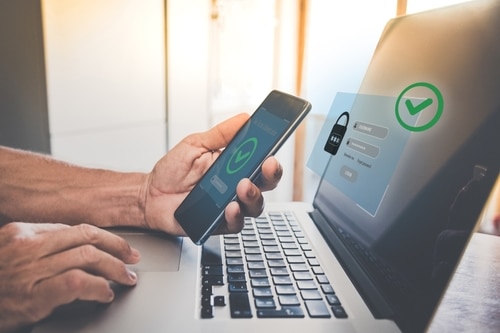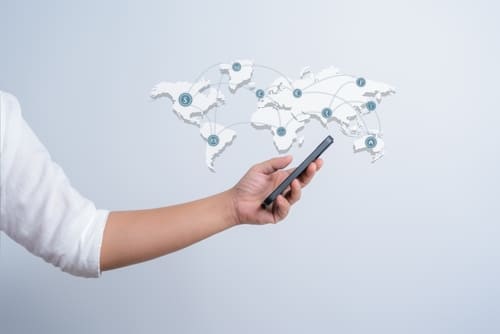Key Highlights
- Digital money exists only in electronic form and allows us to send, receive, and manage money without using cash.
- Blockchain plays a major role in keeping digital transactions secure, traceable, and tamper-proof.
- The main types of digital money include cryptocurrencies, stablecoins, and central bank digital currencies (CBDCs).
- Digital money offers faster payments, lower costs, and improved access to financial services around the world.
- From digital wallets to cross-border payments, digital money is transforming how people and businesses move money globally.
Digital money is more than just a trend—it’s a transformation. It’s making financial services faster, safer, and more inclusive for people around the world. From digital wallets to stablecoins to CBDCs, the way we move money is changing for the better. Whether you’re managing your daily expenses or sending money to family abroad, this guide will explain how digital money works and how it can help you make smart financial choices in a rapidly changing world.
What Is Digital Money, Really?
Think about the last time you paid with your debit card or used an app like Apple Pay. You weren’t handing over cash—you were using digital money. In today’s world, digital money is part of everyday life. It’s the money in your bank account, the funds transferred through mobile apps, and even the cryptocurrency stored in your digital wallet.
Unlike cash, digital money doesn’t exist in a physical form. But that doesn’t make it any less real. In fact, it’s changing how we manage finances—from paying bills and sending remittances to shopping online and splitting dinner with friends.
Why Digital Money Is on the Rise
Speed, convenience, and global access. That’s what’s driving the shift toward digital money. Thanks to evolving technology, sending money today is quicker and easier than ever. Banks, apps, and digital platforms are leaning into digital transactions to streamline payments and reach more people. Whether you’re running a small business or sending money back home, digital tools are making financial tasks faster and more efficient.

How Does Digital Money Work?
Behind every digital transaction is a system of banks, payment processors, and tech platforms working together to verify, approve, and complete transfers—often in seconds.
For the everyday user, it feels effortless. You tap your phone, confirm with a fingerprint, and the payment is done. But in the background, your identity is verified, your funds are checked, and encrypted data is securely transmitted to complete the transaction.
The Role of Blockchain
One of the biggest innovations in digital money is blockchain technology. You’ve probably heard of it in connection with Bitcoin, but its impact goes far beyond crypto.
Blockchain acts as a secure digital ledger. Once a transaction is added to the blockchain, it can’t be changed—making it incredibly difficult to tamper with. This helps build trust in digital systems, especially for peer-to-peer payments and international transfers. It also removes the need for a central authority, which can reduce fees and improve transparency in the long run.
Cryptocurrencies
These are decentralized digital assets like Bitcoin and Ethereum. They’re not backed by a government or bank and tend to be more volatile. But they offer new ways to invest, transact, and transfer value globally.
Stablecoins
Stablecoins aim to combine the best of both worlds. They’re digital currencies backed by stable assets, like the U.S. dollar or gold, which helps reduce volatility. This makes them more practical for everyday transactions.
Central Bank Digital Currencies (CBDCs)
CBDCs are issued and backed by a country’s central bank—think of them as digital versions of traditional currency. Countries like China and Sweden are already testing their own versions. These digital currencies aim to provide security, trust, and accessibility, especially for underserved populations.
Why Digital Money Matters
Digital money isn’t just about convenience—it’s also about inclusion. In many parts of the world, people don’t have access to traditional banking services. But with a smartphone and an internet connection, digital wallets open up new opportunities for financial participation.
Digital money also helps cut down on fees, reduces the need for cash, and makes sending money internationally simpler and faster. For migrant workers sending money to family back home, that speed and cost-savings can make a big difference.

Real-World Use: How People Use Digital Money Every Day
Whether it’s tapping your phone at a store or sending money to another country, digital money is already part of daily life.
Digital Wallets in Action
Apps like Apple Pay, Google Pay, and Samsung Wallet make it easy to store payment info and pay on the go. You can use them to check out at grocery stores, pay for public transportation, or send money to friends—all without ever pulling out your wallet.
They offer added layers of security too, using biometrics and tokenization to keep your info safe.
| Feature | Benefits |
|---|---|
| Contactless Payments | Fast, secure, and hygienic |
| Online Transactions | Safe storage of payment info, easy checkout |
| P2P Transfers | Quick and simple money transfers between friends and family |
A Global Shift: Countries Going Digital
Countries around the world are experimenting with digital currencies and exploring ways to modernize how money moves.
China’s digital yuan is one of the most advanced examples. It’s already being piloted in several cities and designed to make payments faster, safer, and more accessible—especially for people without traditional bank accounts.
Other nations, including the U.S., Sweden, and Nigeria, are exploring their own CBDCs. As more governments and financial institutions embrace digital money, we’re likely to see continued innovation and better access worldwide.
Frequently Asked Questions (FAQs)
Is digital money more secure than traditional banking?
Yes, in many ways. With encryption, multi-factor authentication, and technologies like blockchain, digital money transfers can be just as secure—if not more secure—than cash or checks.
What are the main advantages of using digital money?
Speed, lower fees, and convenience top the list. Digital money lets you send and receive funds anytime, from anywhere, often without needing to visit a bank.
What types of systems are used for digital money movement?
Some common systems include mobile wallets (like Google Pay), online platforms (like MoneyGram or PayPal), and traditional banking tools like debit and credit cards.
How do digital wallets keep my information safe?
Digital wallets use encryption and biometric security (like fingerprints or face ID). They also replace your card info with unique codes (tokens), which adds another layer of protection.
Can I use digital money to send funds internationally?
Absolutely. Services like MoneyGram, especially when integrated with Mastercard Move, allow you to send money to bank accounts or digital wallets across the world—quickly and securely.
What’s the future of digital money?
As more countries and companies adopt digital solutions, we’ll likely see increased access, more affordable services, and innovative ways to manage and move money globally.
